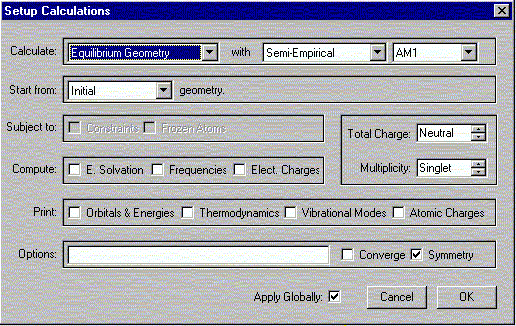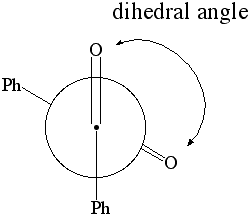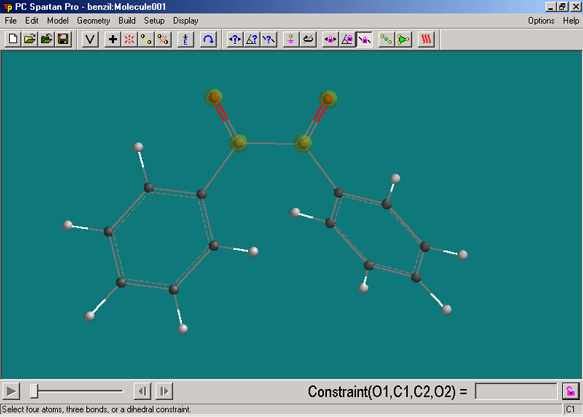1. A student acquires a GC spectrum for his final product from the reduction reaction.
Solvent: dichloromethane, Column: HP-5, l = 30 m, 0.25 mm, Temperature: T(initial)= 100 oC, T(final)= 180 oC, t = 4 min
Results:
| Time (min) |
Height (pA) |
halfwidth (min) |
Peak |
| 1.30 |
30000 |
0.30 |
A |
| 3.55 |
300 |
0.18 |
B |
| 3.65 |
1500 |
0.20 |
C |
| 3.75 |
300 |
0.15 |
D |
a. Which peak belongs to which compound in the final product? How can he confirm these assignments?
b. Determine the percentage composition in terms of isoborneol and borneol in the final product that both compounds have the same response factor.
c. How would the spectrum change if the run would be started at T(initial)=120 oC and ends at T(final)=200 oC with the same temperature gradient?
d. What would change (if anything) if the column length was doubled?
2. Review extraction theory (Survival Kit Reader, Mohrig, etc )and then take the Online Quiz
http://bacher.chem.ucla.edu/TakeQuiz/?id=c51ce410c124a10e0db5e4b97fc2af39
In order to take the quiz, you have to go through a UCLA ICP address. This means that you either have to use your Bruin-Online account or go through the VPN (Vitual Private Network, software can be found here: http://www.bol.ucla.edu/services/vpn/) to have this UCLA ICP address.
To log in, use your last name and your student ID. If you are experiencing problems, contact the instructor via email and include your full name (indicated which one is your last name), your student ID, section and TA. (Hint: Think very careful about each response since many of the questions have more than one answer to them!) Even though you can take the quiz until one hour prior to meeting 4 of your section, you should not delay taking it since there might be some problems with the server or the login. Also, there seem to be problems with MAC systems and Safari Browser. The best is using IE 7.0 or Firefox. After you submit the answers, your score should appear on your screen. If this does not happen, you will have to retake the quiz. (There will not be any possibility to retake the quiz weeks later!). The quiz is worth 10 points.
3. Referring to the phase transfer reaction carried out in the lab, answer the following questions.
a. What is the function of (NBu4)(HSO4) in his reaction? Could it be replaced with (NH4)2SO4?
b. What is the function of NaOCl in the reaction?
c. Why is it important that the reaction mixture is stirred vigorously?
d. How does the student know that the reaction is proceeding according to plan?
e. After the reaction is completed, the mixture is placed in a separatory funnel. How is this accomplished most efficiently? How does the student know which layer contains the product?
f. A student decides to use hexane as solvent for the column chromatography step. Which problem does this pose?
g. Why does benzil crystallize before benzoin during the recrystallization step?
PART II. (Reduction of Camphor, In-lab assignment)
 this is the minimize button. Always minimize your structure before leaving the building mode.
this is the minimize button. Always minimize your structure before leaving the building mode. to enter View Mode
to enter View Mode






